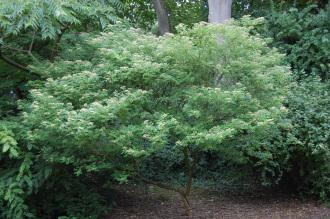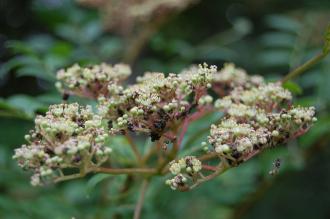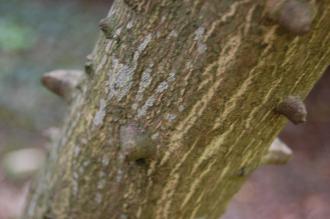
Zanthoxylum piperitum (21/09/2013, Kew Gardens, London)
Position: Full sun to light shade
Flowering period: Late spring
Soil: Moist, well drained
Eventual Height: 3m
Eventual Spread: 3m
Hardiness: 6a, 6b, 7a, 7b, 8a, 8b, 9a, 9b
Family: Rutaceae
Zanthoxylum piperitum is a deciduous large shrub or small tree with a spreading habit. Its mid green leaves are odd pinnate, up to 15cm long and fragrant when touched. Its leaflets are ovate with crenate margins and turn yellow in autumn before hey fall. Its branches have sharp thorns. Its yellow/ green dioecious flowers are up to 5mmm across and appear in axillary clusters. Its red fruit are small aromatic berries and appear in autumn.

Zanthoxylum piperitum Flower (21/09/2013, Kew Gardens, London)
Zanthoxylum piperitum, commonly known as Japanese Pepper Tree or Japanese Prickly Ash, is native to nearly all of Japan, South Keorea and parts of east China. In its native habitat it grows in scrub on hills and mountain sides. Its berries, known as Japanese pepper, is a spice used in a number of Japanese dishes.
The etymological root of the binomial name Zanthoxylum is derived from the Greek zanthos meaning ‘yellow’ and xylon meaning ‘wood’. Piperitum if from the Latin meaning ‘with a hot biting taste’, in reference to its seeds.
The landscape architect may find Zanthoxylum piperitum useful as an attractive small specimen tree.
Ecologically, Zanthoxylum piperitum is a host species for a number of Japanese butterflies.

Zanthoxylum piperitum Bark (21/09/2013, Kew Gardens, London)
Zanthoxylum piperitum prefers moist, fertile, well-drained soils. It tolerates most pH of soil.
Zanthoxylum piperitum requires little maintenance.

